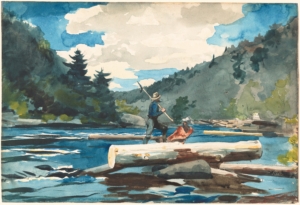Ready to hire a manager? (How do I find one?)
It is very difficult to operate a sustainable and thriving business. As we are starting our venture, it is tempting to take paths of least resistance. In many circumstances, it is smart to conserve energy. So when an artist is ready to hire a manager, it’s common to look to friends, family, or colleagues who feel safe and familiar.
BUT when it comes to hiring, there is an adage that rings true: “hire slow, fire fast.” It costs a lot of money and time to bring someone new into an operation. Similarly, it costs a lot of money, time, and stress to keep the wrong person in place.
Hiring the right people is an art form worth practicing.
What makes a manager?
When it comes to hiring a manager, the right person needs to have an appreciation for efficiency (getting work done without waste) and a respect for structures. Ideally, they have the ability and desire to build routines, design systems, apply those processes, and repeat. A great manager can improvise, but their superpower is actually found in the mundane.
The skills that make a good manager are not frequently aligned with the skills that make one a great artist. Frequently in the art business world, artists look for a studio manager among other artists. This might quickly yield a willing participant, but the results often frustrate both parties. The employee has experience in the arts but likely gets asked to do things that are not their real strengths or comfort. Meanwhile, the employer is frustrated that work is not being done and likely stressed that an employee has their own creative vision to pursue. In theory, it can and sometimes does work for an artist to hire another artist to manage their business, but there might be better options.
A manager loves systems the way an artist loves art
There are people who see beauty in repetition and clarity in the tasks at hand. (Yes, some artists do fall into this category.) These folks often end up in fields like engineering and business administration. As an artist, these people seem inaccessible from a dollar standpoint—aren’t those high-paying jobs? Yes, they are, but they often pay high because other aspects of the job are unfulfilling: the product being produced is meaningless; the culture of the workplace is soulless; the work is toil with a reward that is a medium for something or someone else.
It is quite possible that as an art studio, you can offer systems-loving folks value that exceeds the traditional paths of engineers and business types. The pay can be part of the reward package, but consider that you have meaning, soul, and inspiring business operations.
A manager likes to be in the midst of things
Finding an organized, systems-oriented person may not be any harder than hanging out at a local engineering school. There are likely people in your network who have the skills to be the manager of a growing business like yours.
There are a significant number of folks in the workforce who operate other people’s businesses—or at least a part of those businesses. They are familiar with corporate systems and tools. If no one comes to mind, you certainly know people who know people. The best place to start your search for your next employee is within your own circle of influence. (This is why LinkedIn is popular.)
Ask people: “What do you do? Do you enjoy doing it? Have you thought about a career in the arts?” You might be surprised by who you find in those already close to you.
Messaging to hire a manager
If you are hoping to find someone beyond the realm of a hustling artist who says “yes” to any gig in the arts, you might have to consider your messaging.
A “studio manager” is not going to catch someone whose résumé includes “engineer” positions only. However, an “Excel wizard that enables others to build monuments” might sound familiar and crazy enough to excite a spreadsheet savant in an otherwise soulless middle management position. The specific skills needed to produce your bold products and services can make for captivating job post messaging. There are no rules for marketing jobs. It is fair, and valuable, to lean into creativity to attract the right talent.
Managing the hiring process
Everyone has a portfolio. No, the manager you hire may not have photos of creative projects they have made successful—particularly if they are outside of the arts world. However, they will have samples of their organization skills and the ability to show how they refined corporate tools. As you are considering the fit of a person to run your studio, consider if their process for organizing aligns with yours. They should be able to use the tools (or introduce new ones) that help your operation keep running even smoother.
It will be important that you can work well together. Remember, a manager is likely being hired to manage your time. Will you let them tell you what to do? And if you are pursuing someone with strengths that are not your own, their personality might also be different. This can initially cause tension. However, if you are serious about getting to new places in your business, then the friction might be exactly what you need to overcome the obstacles you’ve been facing. Trust and respect, although hard to quickly assess in hiring, might be the most valuable aspects to consider when passing the keys to your studio to someone else to run.
“I’m looking for a manager who can also…”
It’s a bonus to hire a manager who is also able to do the work. Does the studio needs operational support? Look for a manager who has skills to apply to production. Is communication is lacking from the studio (grants, newsletters, posts, captions)? Look for someone who has a way with words or marketing experience. Are sales slow? Look for a manager who would be fantastic to bring along for meetings with clients. They can help build relationships and close deals.
Multi-talented folks exist. Clarity on what you need might lead you to the rare gem that can make the studio run more efficiently and accomplish even more.
A manager is a great addition to any studio—especially when the time is right. Good management will get you more time for research and development (i.e., more time in the studio).
If you are ready to hire a manager but still uncertain, we might be able to help. Consider signing up to learn about our free monthly virtual professional development workshops or schedule time to chat.
Banner art credits: The Northern Whale Fishery: The “Swan” and “Isabella”, c. 1840 is a oil on canvas work by John Ward of Hull. Known as a premier ship and marine oil painter, his family background in the industry must help to create such a mystical, nautical scene. The careful, finely detailed figures have a sharpness that give them clarity and strength against any backdrop. 



